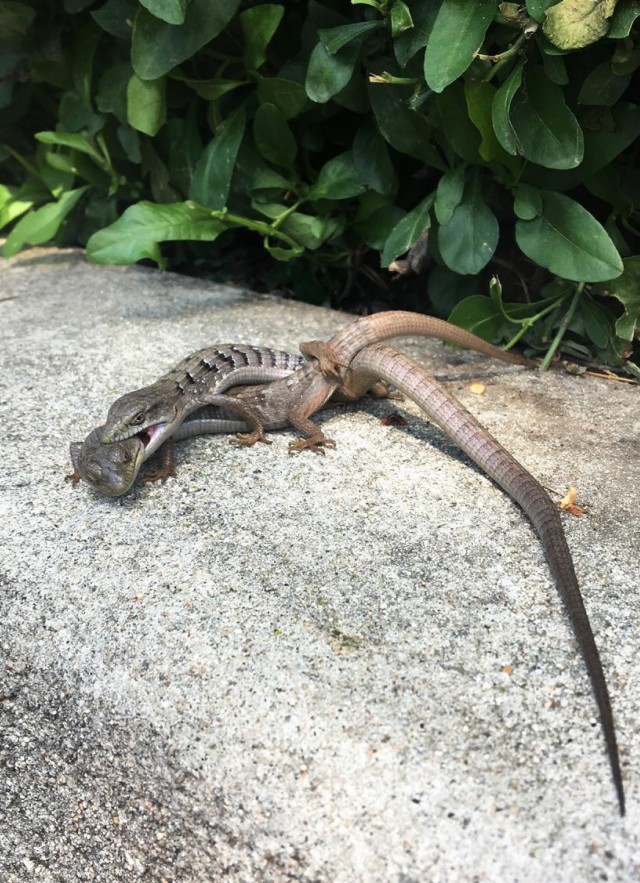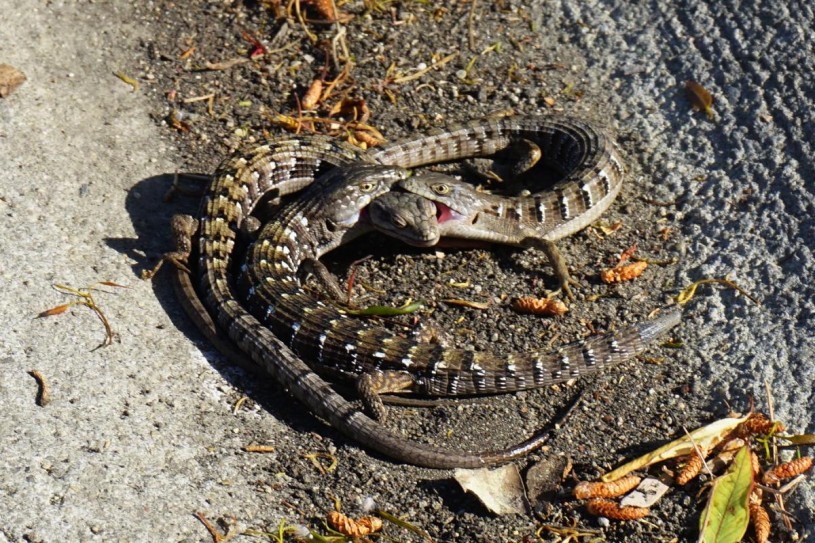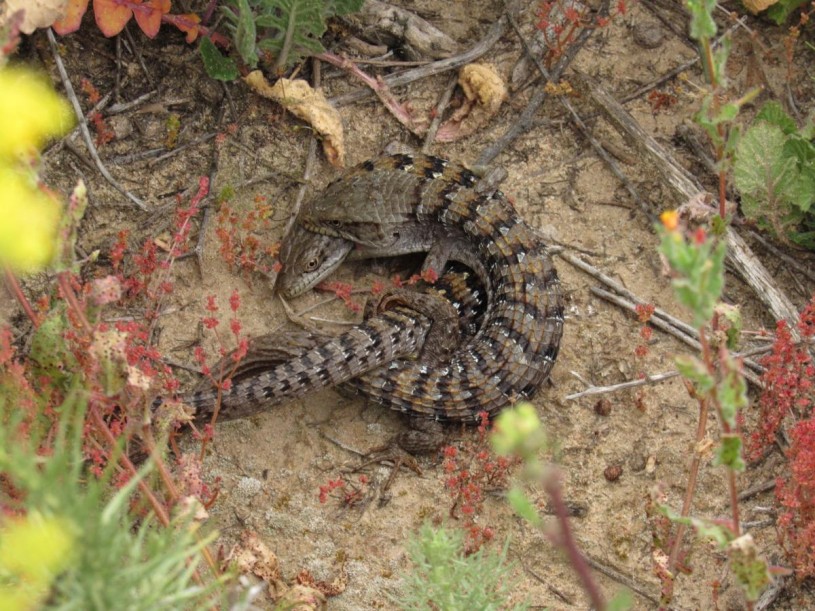They're Lovers, not Cannibals!
Our wet winter across the western U.S. is likely to make for an excellent spring mating season for alligator lizards, and we need your help to study their mating activity.

April 12, 2019
The southern alligator lizard can be found from northern Baja California to southern Washington, and their close relative, the northern alligator lizard, can be found from central California to southern British Columbia. In urban areas, including the Greater Los Angeles Area, they are the most widespread lizards, found from Pasadena porches to Santa Monica seaside gardens.
Within the ranges of these two alligator lizard species are a handful of major museums, hundreds of universities, and thousands of biologists, so you might think we must know everything there is to know about alligator lizards. Unfortunately, like most other species on this planet, we still have a huge amount to learn about the basic natural history of alligator lizards.
Five years ago, we realized that we could use community science as a way to study mating behavior. At that time, there were only three dates for when southern alligator lizards had been observed breeding that were reported in the scientific literature. We knew we could get more observations through community science, by crowdsourcing the study of this rarely documented behavior. We started asking people to send us photos and videos of mating pairs. We have now accumulated 255 observations of mating southern alligator lizards and 37 observations of northern alligator lizards. We are pretty sure that through community science, we have generated the largest dataset ever on lizard mating.

What have we learned with all these observations? Here are three discoveries so far:
1. Weather has a huge impact on the timing of the breeding season. Cooler and wetter weather will delay the start of the mating season. If mating activity has already started, then bigger storm systems can shut down activity until weather improves. Normally the first observations of the year are from the southern end of the range, usually San Diego County, and are around the second week of February. Following 2019’s cool, wet February, the mating season started about a month later in mid-March.
2. Wet years are the big breeding years. Although we started this research effort in 2015, people have submitted observations that date back to 2003 (woohoo for digital cameras!). Across these years, what we see are that drier years have reduced breeding activity. For example, the 2015, 2016, and 2018 mating seasons followed drought years or below average rainfall totals, and we received about 30 observations of southern alligator lizards in the mating position. But following the wet 2016/17 winter, we received 87 observations! The 2019 season is only just getting started (all observations are still from the very southern end of the range), and we already have 33 observations, most of which are from early April. We expect many more observations through the 2019 season.
3. Lizards can stay paired up for over two days! The actual act of mating likely takes place shortly after the lizards pair up. However, the male maintains the bite hold for a long time. This is most likely a type of “mate guarding,” in which the male is trying to make sure that no rival males try to mate with the female (but we still have more research to do before we are positive this is what’s happening). But how long might a male maintain the bite hold? This year, two dedicated community scientists repeatedly checked back on a pair and observed the lizards together for nearly 49 hours! This is a new record for this species!

What to look for? During mating season, males search out females. The male bites the female on her neck or head and may hold her this way for several days. Early in the encounter, the two may engage in a bit of a wrestling match (if you see this, please try to get videos). Sometimes, a second male shows up and we get even more interesting observations! About 8% of all observations in our dataset have two males.
When to look? Because we have accumulated so many observations, we now know that the southern alligator lizard mating season can start as early February in the southern part of the range and continues into early June in the northern part of the range and at higher elevations. In Southern California, most of the breeding activity is between March 11 and late April. This year, the season is just getting started, and mating pairs should be found in coastal Southern California through early May, with mating in more northern and higher elevation locations throughout May and June. For the northern alligator lizard, breeding has also just started and will continue through mid-June, again with lizards in the south and at lower elevation populations breeding earlier.
Where to look? Alligator lizards can be found from coastal sand dunes to high elevations in our mountains. And they do better than any other local lizard in urban areas. When in the mating hold, pairs can even be found out in the open, and are often observed on driveways, sidewalks, lawns, and in yards. It is also possible to find pairs several feet off the ground on fences and in shrubs.
How to document? Take photos! If the pair is actively wrestling, please take video as well. We are especially interested in how long pairs remain in the mating hold, so please check back every few hours and search for the pair in the general area.
If you see courting or mating alligator lizards, please take photos (and maybe also video if they are being active) and submit these to the RASCals project. You can do this through iNaturalist, or by emailing the photo to rascals@nhm.org, or by using #NatureinLA on social media (Facebook, Twitter, Instagram), or by texting us your photos at 213- 663-6632. If you have photos from previous years, please submit those as well.

